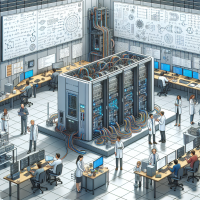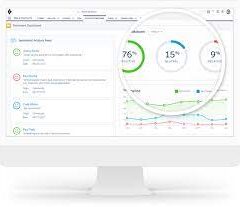Climate Change: A Global Crisis Demanding Urgent Action
Climate change is one of the most critical challenges of our time, accelerating at an unprecedented pace. Rising global temperatures, melting polar ice, surging sea levels, and intensifying extreme weather events are destabilizing ecosystems, endangering biodiversity, and jeopardizing human communities worldwide. The future of our planet and the well-being of generations to come depend on decisive action—reducing greenhouse gas emissions, shifting to renewable energy, and embracing sustainable practices. Artificial intelligence (AI) is emerging as a vital tool in this fight, offering innovative technological solutions to advance sustainability efforts.
AI for a Sustainable Future
Sustainability is about meeting society’s environmental, social, and economic needs without compromising future generations’ ability to do the same. With mounting pressure on Earth’s resources and growing recognition of the need for responsible practices, sustainability has never been more crucial. The United Nations’ 17 Sustainable Development Goals (SDGs) provide a global framework for fostering sustainable progress.
AI stands at the forefront of this movement, enabling smarter resource management, waste reduction, and more efficient systems—while also demanding careful consideration of its own environmental impact.
Key Areas Where AI Drives Sustainability
- Smart Energy Management
AI enhances energy efficiency by analyzing consumption patterns, predicting demand peaks, and optimizing distribution. For example, Google reduced data center cooling energy use by 40% using AI-driven systems. Smart grids, powered by AI, further minimize energy waste and improve reliability. - Precision Agriculture
AI-driven tools like machine learning and satellite imaging help farmers optimize planting, irrigation, and harvesting. This reduces water and energy use while boosting crop yields, making agriculture more sustainable. - Sustainable Transportation
AI improves transportation efficiency through autonomous vehicles that optimize routes, AI-powered traffic systems that reduce congestion, and innovations in electric vehicle design—all contributing to lower emissions. - Waste Management
AI enhances recycling by automating waste sorting and predicting generation trends. It also optimizes collection routes, cutting fuel consumption and emissions.
Beyond these areas, AI aids sustainability across industries—streamlining manufacturing processes, designing energy-efficient buildings, and advancing green technologies.
The Hidden Cost: AI’s Carbon Footprint
Despite its benefits, AI has a significant environmental downside. Data centers, which power AI systems, consume vast amounts of energy—accounting for roughly 1% of global electricity use—and this demand is rising. Much of this energy comes from non-renewable sources, contributing to carbon emissions. Additionally, hardware production involves resource-intensive processes, from mining rare metals to managing electronic waste.
It is not totally unimaginable that the “tree huggers” and “nuclear power haters” are dusting off their signs to protest the surging power demands of AI.
To maximize AI’s sustainability potential, we must address its environmental impact. This includes:
- Developing energy-efficient algorithms
- Optimizing data center operations
- Prioritizing sustainable hardware design
By balancing AI’s advantages with its ecological costs, we can harness its power to build a greener future—without undermining the very goals it seeks to achieve.











